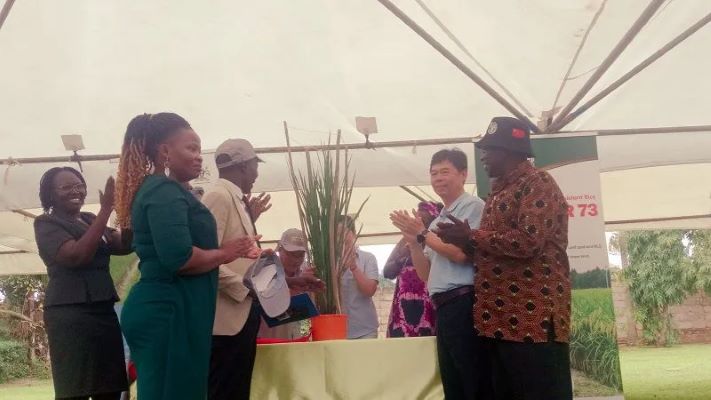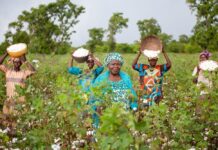Uganda, through the Ministry of Agriculture, Animal Industry and Fisheries (MAAIF) in partnership with Food and Agriculture Organization of the United Nations (FAO) and Chinese firm, Shanghai Agro-Biological Gene Centre (SAGC) has rolled out new high-yielding and weather-friendly rice poised to boost farmers’ production in the East African nation.
The new hybrid rice, WDR-73 was developed by SAGC in collaboration with National Agricultural Research Organisation – NARO under the recently launched Phase 3 of the FAO-China South-South Cooperation (SSC) Programme.
According to the developers, the new ice variety will tackle issues of drought and does not need to be planted in paddies.
It also has a medium maturity period of 130 days, moderate aroma, straw-coloured grains with a curved tip, large grains like Supa, medium grains of 25g per 1,000 grains and it is tolerant to diseases such as RYMV, Rice blast, BLB, Narrow leaf spot and BLS.
The variety combines both high yield potential and water savings as well as drought tolerance as compared to the irrigated paddy rice varieties.

“From the studies done in Kenya, Ghana and Uganda, the new variety will boost food security and income of households. Out of the 50 rice varieties tested, WDR-73 came strong showing potential and ability to improve yields by about 30 per cent as compared to the local ones,” said Charles Owach, assistant FAO representative in charge of programs.
He urged farmers to adopt the rice because of it competitive advantages in terms of increasing incomes and protecting households from hunger and malnutrition while at the same time addressing climate and drought challenges.
According to Stephen Katabazi, a senior inspector at MAAIF, the new rice variety will help the country in its quest to solve food insecurity and become Africa’s food basket.
Before the roll out, WDR-73 pilot cultivation was conducted in Lukaya, Luwero, and Arua districts under well managed farms which enabled it record 4.35 to .06 tonnes yield increase per hectare.
In Arua, at a growth duration of 90-95 days, the variety yielded up to 4.35 tonnes per hectare, while direct seeded WDR-73 grain in Luwero yielded between 6-8 tonnes per hectare,” said Katabazi.
To ensure sustainability, agricultural officers from 30 districts and 100 lead demonstration farmers and producers from districts of Butaleja, Luwero, Lira, Oyam, Tororo, Kibuku, Budaka, Bugweri, Pader, Kaliro, Adjumani, Kamuli, Iganga, Soroti, Katakwi, Luuka, Kalungu, Kayunga, Luwero and Bulambuli districts were taken through a 5-day training at Wills and Wash Hotel in Mbale where they were equipped with all the necessary skills.
Mr Antonio Querido, FAO Representative in Uganda underscored the importance of water-saving and drought-resistant rice for food security, nutrition and income security which at the same time addresses climate challenges such as drought.
“As much as rice is a staple for more than 3.5 billion people, including most of the world’s poor, it can be a problematic crop to farm, however, the new variety will give easy time for growers,” said Querido.
Peter Muyimbo from the Ministry of Agriculture who also coordinates the SSC project said the government has partnered with the China-Uganda Agriculture Cooperation Industrial Park in Luwero that was established in 2016, which will ensure even distribution of seeds to farmers.








